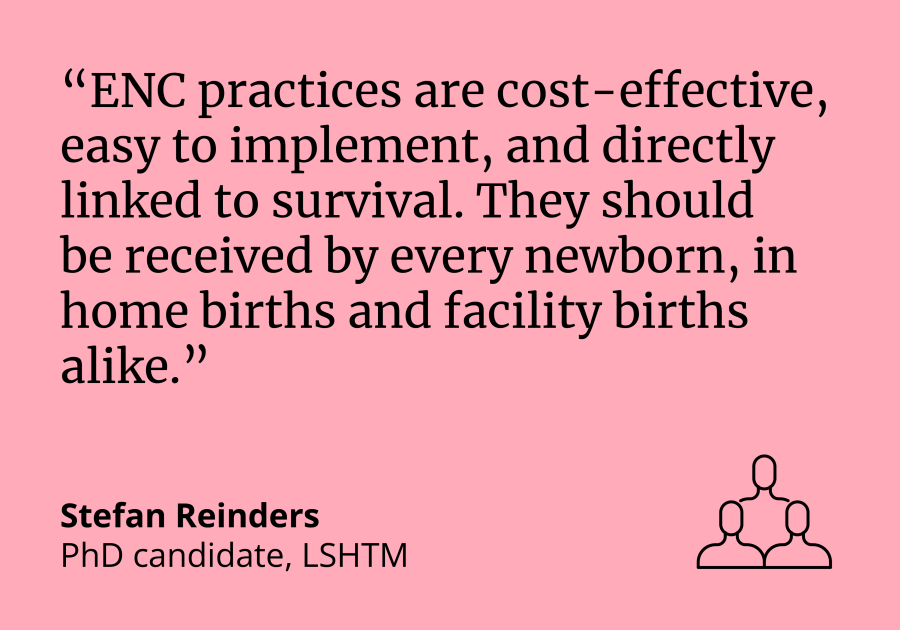
The prevalence of Essential Newborn Care (ENC) is low in rural communities in the Peruvian Amazon, with higher coverage gaps in home births compared to facility births, a new analysis shows.
Researchers from the London School of Hygiene & Tropical Medicine (LSHTM), Stefan Reinders, Carine Ronsmans, and Melissa Neuman, analysed census data from programme evaluation collected in rural communities in three remote districts in the Loreto region of Peru.
Essential Newborn Care (ENC) includes hygienic cord care, thermal care and optimal breastfeeding practices. It is recommended by the World Health Organization (WHO) for every newborn born in any setting.
The analysis found that among all births recorded, prevalence was lowest for skin-to-skin contact, colostrum feeding, and early breastfeeding. ENC was consistently lower in home births compared to facility births.
Stefan Reinders, PhD candidate at LSHTM and lead author, said: “We found a low prevalence of ENC in a setting with high neonatal mortality, multi-faceted access barriers to facility care, and high proportion of home births. ENC practices are cost-effective, easy to implement, and directly linked to survival. They should be received by every newborn, in home births and facility births alike.”
In Peru, significant progress has been made to reduce neonatal mortality. However, large inequalities exist, particularly in the Amazon region. Loreto is one of the regions of Peru with the poorest neonatal health, especially in remote and indigenous communities.
This is the first study in Peru that provides prevalence estimates for a complete set of ENC indicators: immediate drying, immediate skin-to-skin contact, delayed bathing, clean cord tying, clean cord cutting, clean cord care, colostrum feeding, early breastfeeding, and exclusive breastfeeding in first 3 days of life.
297 women aged 15 to 49 years were included in the analysis. Of these, 70% gave birth at home. Most of these births took place without a skilled birth attendant present with 63% of home births attended by a Traditional Birth Attendant (TBA). Only 19% of the women included gave birth in a hospital.
The analysis found that prevalence of immediate drying, immediate skin-to-skin contact, clean cord care, colostrum feeding, and early breastfeeding was significantly higher in facility births compared to home births. However, ENC was also not universal in facility births. Delayed bathing was less common in facility births compared to home births.
The research findings demonstrate a large unmet need to improve ENC practices across both home and facility births and suggest potential for a community-based intervention to promote ENC practices at home, in case facility births are not feasible or desired, accompanied by promotion of healthcare seeking and simultaneous strengthening of routine newborn care in health facilities.
The research was funded by Grand Challenges Canada and Peruvian National Council of Science, Technology, and Technology Innovation.
Our postgraduate taught courses provide health practitioners, clinicians, policy-makers, scientists and recent graduates with a world-class qualification in public and global health.
If you are coming to LSHTM to study a distance learning programme (PG Cert, PG Dip, MSc or individual modules) starting in 2024, you may be eligible for a 5% discount on your tuition fees.
These fee reduction schemes are available for a limited time only.
